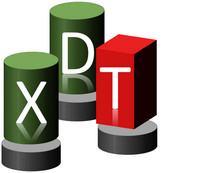 “More power to the elbow”… this is all about getting more from the resources you have already got, and in this case I’m talking about your Translation Memories. In particular I’m talking about enabling them for upLIFT. upLIFT, in case you have not heard about this yet despite all the marketing activity and forum discussions since August this year, is a technology that is being used in SDL Trados Studio 2017 to enable some pretty neat things. I’m not going to devote this article to what upLIFT is all about as Emma Goldsmith has written a really useful article today that does a far better job than I could have done. You can find Emma’s article here, called “SDL Trados studio 2017 : fragment recall and repair“. But a quick summary to get us started is that upLIFT enables things like this:
“More power to the elbow”… this is all about getting more from the resources you have already got, and in this case I’m talking about your Translation Memories. In particular I’m talking about enabling them for upLIFT. upLIFT, in case you have not heard about this yet despite all the marketing activity and forum discussions since August this year, is a technology that is being used in SDL Trados Studio 2017 to enable some pretty neat things. I’m not going to devote this article to what upLIFT is all about as Emma Goldsmith has written a really useful article today that does a far better job than I could have done. You can find Emma’s article here, called “SDL Trados studio 2017 : fragment recall and repair“. But a quick summary to get us started is that upLIFT enables things like this:
- fragment matching
- whole Translation Units
- partial Translation Units
- fuzzy match repair
- from fragment matching
- from your termbase
- from Machine Translation

 CAT tools typically calculate wordcounts based on the source material. The reason of course is because this way you can give your clients an idea of the cost before you start the work… which of course seems a sensible approach as you need to base your estimate on something. You can estimate the target wordcount by applying an expansion factor to the source words, and this is a principle we see with pseudotranslate in Studio where you can set the expansion per language to give you some idea of the costs for DTP requirements in the finished document before you even start translating. But what you can’t do, at least what you have never been able to do in all the Trados versions right up to the current SDL Trados Studio, is generate a target wordcount for those customers who pay you for work after the translation is complete and are happy to base this on the words you have actually translated.
CAT tools typically calculate wordcounts based on the source material. The reason of course is because this way you can give your clients an idea of the cost before you start the work… which of course seems a sensible approach as you need to base your estimate on something. You can estimate the target wordcount by applying an expansion factor to the source words, and this is a principle we see with pseudotranslate in Studio where you can set the expansion per language to give you some idea of the costs for DTP requirements in the finished document before you even start translating. But what you can’t do, at least what you have never been able to do in all the Trados versions right up to the current SDL Trados Studio, is generate a target wordcount for those customers who pay you for work after the translation is complete and are happy to base this on the words you have actually translated.  It’s all about the termbase definition when you want to merge termbases, or import data into MultiTerm termbases. The XDT… otherwise known as the MultiTerm Termbase Definition file is the key to being able to ensure you are not trying to knock square pegs into round holes! I’ve written in the past about
It’s all about the termbase definition when you want to merge termbases, or import data into MultiTerm termbases. The XDT… otherwise known as the MultiTerm Termbase Definition file is the key to being able to ensure you are not trying to knock square pegs into round holes! I’ve written in the past about  quite a good analogy… the four keys in the image on the right will all open a lock, but they won’t all open the same lock. If you want one of these keys to open another lock then you need to change its shape, or it’s “definition”, to be able to open the lock. A termbase definition works in a similar way because MultiTerm is flexible enough to support you creating your own lock. That lock might be the same as someone else’s, but theirs could also have a different number of pins and tumblers which means your key won’t fit.
quite a good analogy… the four keys in the image on the right will all open a lock, but they won’t all open the same lock. If you want one of these keys to open another lock then you need to change its shape, or it’s “definition”, to be able to open the lock. A termbase definition works in a similar way because MultiTerm is flexible enough to support you creating your own lock. That lock might be the same as someone else’s, but theirs could also have a different number of pins and tumblers which means your key won’t fit. Everyone knows, I think, that an SDL Trados Studio package (*.sdlppx) is just a zip file containing all the files that are needed to allow you to create your Studio project with all the settings your customer intended. At least it’ll work this way if you use Studio to open the package… quite a few other translation tools these days can open a package and extract the files inside to use but
Everyone knows, I think, that an SDL Trados Studio package (*.sdlppx) is just a zip file containing all the files that are needed to allow you to create your Studio project with all the settings your customer intended. At least it’ll work this way if you use Studio to open the package… quite a few other translation tools these days can open a package and extract the files inside to use but  Wow… how time flies! Over three years ago I wrote an article called
Wow… how time flies! Over three years ago I wrote an article called  … and hundreds or thousands of heads are better than two!!
… and hundreds or thousands of heads are better than two!! Over the last year or so I’ve been asked by quite a few translators whether SDL Trados Studio supported using
Over the last year or so I’ve been asked by quite a few translators whether SDL Trados Studio supported using  This year seems to be the time our voices can be heard. There’s been some pretty big decisions on the table already this year that have produced some very surprising results. Brexit… who knew the majority of people in the United Kingdom would vote to leave the European Union. Who knew it would be called Brexit… guess UKexit was too hard to pronounce! Who knew Donald Trump would become the Republican Presidential nominee; who knew Bernie Sanders would not fare so well for the Democrats? If you live in these countries then these were all big decisions that you may have had a hand in even if you didn’t vote. If you’re unhappy with the result, you should have voted; if you think now they were bad decisions then perhaps more could have been done to help ensure you were better informed?
This year seems to be the time our voices can be heard. There’s been some pretty big decisions on the table already this year that have produced some very surprising results. Brexit… who knew the majority of people in the United Kingdom would vote to leave the European Union. Who knew it would be called Brexit… guess UKexit was too hard to pronounce! Who knew Donald Trump would become the Republican Presidential nominee; who knew Bernie Sanders would not fare so well for the Democrats? If you live in these countries then these were all big decisions that you may have had a hand in even if you didn’t vote. If you’re unhappy with the result, you should have voted; if you think now they were bad decisions then perhaps more could have been done to help ensure you were better informed? We all know, I think, that translating a PDF should be the last resort. PDF stands for Portable Document Format and the reason they have this name is because they were intended for sharing with users on any platform irrespective of whether they owned the software used to create the original file or not. Used to share so they could be read. They were not intended to be editable, in fact the format is also used to make sure that the version you are reading can’t be edited. So how did we go from this original idea to so many translators having to find ways to translate them?
We all know, I think, that translating a PDF should be the last resort. PDF stands for Portable Document Format and the reason they have this name is because they were intended for sharing with users on any platform irrespective of whether they owned the software used to create the original file or not. Used to share so they could be read. They were not intended to be editable, in fact the format is also used to make sure that the version you are reading can’t be edited. So how did we go from this original idea to so many translators having to find ways to translate them? This time a couple of weeks ago the image on the left was me, doing something I’ve never done before… Yoga. I’ve never seen this as anything I’d ever do but agreed to a
This time a couple of weeks ago the image on the left was me, doing something I’ve never done before… Yoga. I’ve never seen this as anything I’d ever do but agreed to a